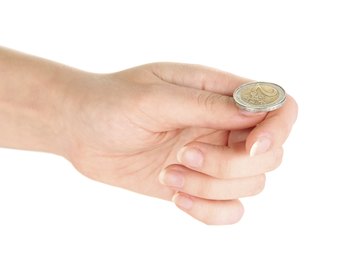
If you roll a die 100 times and count the number of times you roll a five, you're conducting a binomial experiment: you repeat the die toss 100 times, called "n"; there are only two outcomes, either you roll a five or you don't; and the probability that you'll roll a five, called "P," is exactly the same each time you roll. The result of the experiment is called a binomial distribution. The average tells you how many fives you can expect to roll, and the variance helps you determine how your actual results might be different from the expected results.
Mean of Binomial Distribution
Suppose you have three green marbles and one red marble in a bowl. In your experiment, you select a marble and record "success" if it's red or "failure" if it's green, and then you put the marble back and select again. The probability of success - - selecting a red marble -- is one out of four, or 1/4, which is 0.25. If you conduct the experiment 100 times, you would expect to draw a red marble one quarter of the time, or 25 times in total. This is the mean of the binomial distribution, which is defined as the number of trials, 100, times the probability of success for each trial, 0.25, or 100 times 0.25, which is equal to 25.
Variance of Binomial Distribution
When you select 100 marbles, you won't always choose exactly 25 red marbles; your actual results will vary. If the probability of success, "p," is 1/4, or 0.25, that means the probability of failure is 3/4, or 0.75, which is "(1 - p)." The variance is defined as the number of trials times "p" times "(1-p)." For the marble experiment, the variance is 100 times 0.25 times 0.75, or 18.75.
Understanding Variance
Because the variance is in square units, it's not as intuitive as the mean. However, if you take the square root of the variance, called the standard deviation, it tells you by how much you can expect your actual results to vary, on average. The square root of 18.75 is 4.33, which means you can expect the number of red marbles to be between 21 (25 minus 4) and 29 (25 plus 4) for each 100 selections.
References
Resources
About the Author
Steve McDonnell's experience running businesses and launching companies complements his technical expertise in information, technology and human resources. He earned a degree in computer science from Dartmouth College, served on the WorldatWork editorial board, blogged for the Spotfire Business Intelligence blog and has published books and book chapters for International Human Resource Information Management and Westlaw.
Photo Credits
belchonock/iStock/Getty Images
